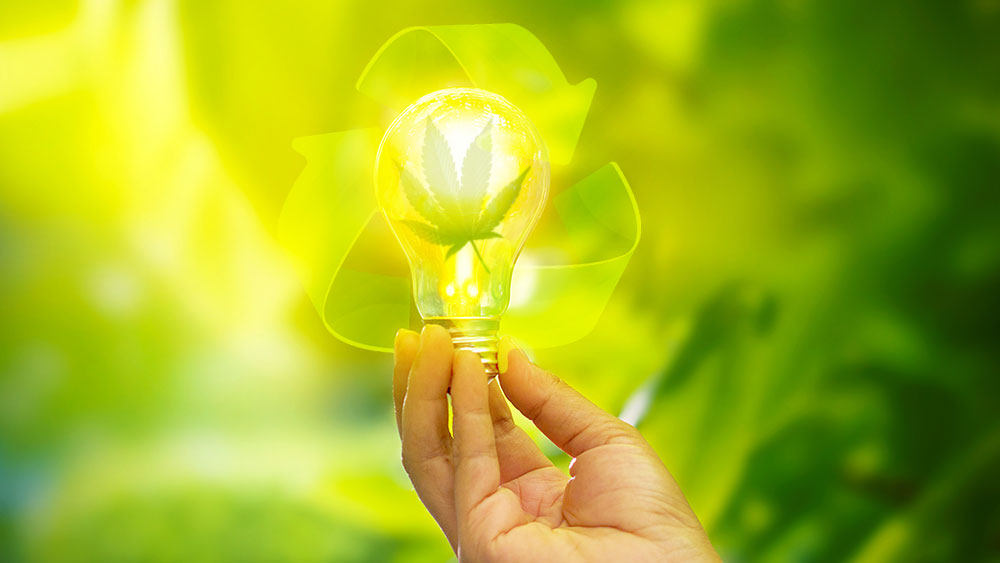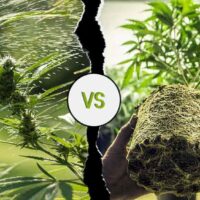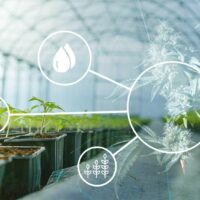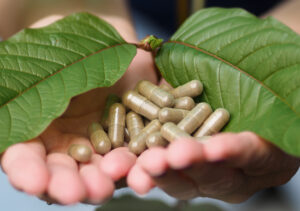The growing legalization of cannabis shed some new light on the vastly overlooked phenomenon of the environmental downside of marijuana cultivation.
The problem is, marijuana has been illegal for such a long time that no one measured the environmental “damage” that this crop produces.
Actually, cannabis is still considered a Schedule I drug and being illegal on the federal level puts a significant obstacle to any coherent research or universal environmental regulations.
Producers who are operating legally today started their business in the black market where they did not need to comply with any environmental policies.
And illegal drug production is still a major problem even in states where cannabis is legalized and decriminalized.
It seems that the fastest growing industry in the United States is in desperate need of established sustainable practices and policies that aim to prevent negative environmental implication of marijuana cultivation.
The carbon footprint of marijuana
A carbon footprint is the total emission of greenhouse gases, primarily carbon dioxide (CO2) that is released into the atmosphere as a result of a particular human activity.
Some scientists believe that humans are 100% responsible for global warming and all the release of greenhouse gases in the past 150 years.
Agriculture is the world’s second largest carbon-intensive sector, right after the energy sector, while indoor growing marijuana is on top of the list of the most energy-intensive agricultural crops.
Indoor cannabis is considered to have superior characteristics when compared to the outdoor one. It is more potent, has a stronger taste/smell and it is aesthetically more appealing.
The reason for this is that growers can create an optimal climate for indoor cultivation by maintaining the ideal lighting, temperature, humidity, and air-conditioning.
Unfortunately, all those activities use a massive amount of energy that needs to be monitored and reduced.

The effects of cannabis cultivation on electricity consumption
Energy consumption goes from below 1kWh per square foot of canopy for outdoor solar-powered facilities to more than 140 kWh per square foot of indoor cultivation.
All that energy is primarily powered by burning fossil fuels (e.g. coal) that are the greatest source of carbon dioxide (CO2) emissions.
Based on the amount of electricity spent on cannabis cultivation in California, climate change scientist Evan Mills estimated that 1 kg of cannabis releases 4600 kg of CO2, and average annual marijuana consumption emits around 15 million metric tons of CO2 into the atmosphere.
To put these numbers into perspective, this amount of CO2 emission is equal to the annual electricity use of 1 million average California homes, pollution of 3 million average US cars or 1% of annual national electricity use in the US.
Very little data could be gathered on illegal marijuana cultivation, but it is obvious that these practices are far more environmentally destructive, because there are no regulations or environmental laws on the black market.
This is the main reason why scientists and environmentalists advocate the legalization of marijuana, because it is the only way to decrease the pollution caused by illegal marijuana production.
And it seems that marijuana legalization is already making a positive mark on energy efficiency. This change can simply be explained by the basic economic principle: the law of demand and supply.
By legalizing marijuana in certain U.S. states, it was expected that cannabis consumption will sky-rocket in the following years.
The predictions were right, and greater demand for cannabis prompted a lot of new producers to enter this profitable business. When a growing supply of cannabis exceeded demand, the only possible outcome was reduction in marijuana price.
This exact scenario is what happened to Colorado, one of the first U.S. states that legalized recreational marijuana use. It was reported that the price of weed was at the constant downfall since they legalized marijuana back in 2012.
This might be good news for customers, but it’s especially good for our precious planet.
When the price of pot dropped, producers tried to find new ways to operate more efficiently, e.g. to cut cannabis production costs. And the main portion of total cannabis operating budget goes on the electricity bill, somewhere around 20% of the total cost.
Most of the growers in the U.S. are now shifting to more energy-efficient practices in growing indoor cannabis, such as replacing traditional fluorescent lights with LED lights, technologically advanced cooling and humidity systems, etc.
Greenhouse production is another more sustainable approach to cannabis cultivation because intensive lighting is necessary only when there is a lack of natural light.
These measures resulted in a significant reduction of energy used per pound of marijuana in Denver, Colorado.
It was reported that marijuana electricity demand has dropped by significant 8% in 2018, which is a first-time reduction since authorities started tracking marijuana electricity consumption in 2013.
The effects of cannabis cultivation on water consumption
Electricity is not the only resource that cannabis relies on. There is, of course, the source of human life – our precious water.
Marijuana is one thirsty crop that can consume up to 22 liters of water per day in the 150‐day (June to October) growing season.
It has been estimated by Bauer et al. 2015 that the average marijuana density in a greenhouse is 900,000 plants per square kilometer, which brings us to a staggering number of 3 billion liters of water per square kilometer of greenhouse-grown marijuana.
Outdoor cultivation goes around 130,000 plants per square kilometer which consumes around 430 million liters of water spent per square kilometer of marijuana farm in the growing season.
When we talk about indoor cultivation, marijuana is equally water-intensive, especially if it is grown hydroponically.
A hydroponic system is a soilless method of growing marijuana in a water-based solution that is filled with nutrients.
Although hydroponic marijuana grows much faster and has larger yields, it has been estimated that one hydroponic room of 22 square meters requires 151 liters of water every day.
California’s infamous “Emerald Triangle”, the largest cannabis-producing region in the U. S., has experienced many droughts throughout history. However, the last one (2011-2017) has been referred to as “one of the most intense droughts in California history”.
Some reports suggest that one of the reasons for serious water shortages in the state is constant expansion of marijuana farming in this area.
According to a study from 2015 by the California Department of Fish and Wildlife, marijuana farming in California is becoming an “emerging threat” for water supplies and aquatic biodiversity.
Some small creeks have been completely drained while larger river streams experienced “flow diversion and higher stream temperatures” by the increasing demands of marijuana cultivation.
Since the last drought, California has established many rules and regulations for cannabis cultivation in order to protect water flows.
Water Boards Cannabis Cultivation Programs has been adopted in 2017 and since then cannabis cultivators have been obliged to apply for necessary water quality and water right permits.
So far, California is leading the way in sustainable water management regulations among cannabis growers. Let’s hope that in the future similar environmental practices will spread to the rest of the U.S. states.
The effects of illegal cannabis cultivation on chemical contamination and wildlife
Legalizing recreational marijuana in some U. S. states hasn’t slowed down the thriving of the cannabis black market, new research suggests.
According to New Frontier Data, 80% of the cannabis sold in California comes from the illicit market. A similar situation is going on in Canada, where black market share is expected to account for 71% of total cannabis sales in 2019.
California’s forests are home to thousands of trespass marijuana grow farms. The problem is, these farmers are causing environmental disaster because they often use toxic and restricted pesticides to protect the crop from rodents and increase yields.
Carbofuran, one of the most poisonous pesticides banned in the United States, European Union and Canada, has been found in 9 out of every 10 illegal pot farms in California. This pesticide is so strong that it takes a quarter of a teaspoon to kill a 300-pound bear.
Carbofuran is leaching into the California creaks, rivers and it has already contaminated a significant portion of public forests.
Different studies documented an imposed threat of wildlife poisoning associated with illegal use of toxic pesticides such as carbofuran and anticoagulant rodenticides (AR). The species such as: Pacific fishers, mule deer, gray foxes, Steller’s jays, ravens, coyotes, barred owls and even black bears have been found dead at the trespass sites.
Environmental groups and public forces are working hard to decontaminate illegal grow sites, and by August 2018 they managed to clean 160 polluted areas.
But, there are additional 830 sites that need to be cleaned up, and who knows how many unknown ones that still need to be discovered.
What is the conclusion/solution?
The environmental impact of marijuana production is a serious problem, and it will only continue to get worse as the demand for cannabis increases.
These issues have been overlooked for a long time, but it seems that the government is beginning to recognise the importance of stricter environmental regulations in marijuana production.
But regardless of any government laws and regulations, there is still one thing that all of us, conscious consumers, could do.
At the end of the day, we are the ones who can make a positive change by buying eco-friendly weed from producers who are committed to sustainable marijuana cultivation.








Evan Miulls November 6, 2019 at 6:21 am
Nice reporting. One important correction: My 2012 study estimating national energy use and CO2 emissions covered all cannabis production, not just legal/medical.
Ana Stanojevic November 7, 2019 at 11:35 am
Dear Evan, Thanks so much for taking the time to read the article! We really appreciate your feedback, and apologize for the error in reporting. I deleted the paragraph where it says that the emissions are only from legal farms, I hope the information is now accurate. Have a great week! :)